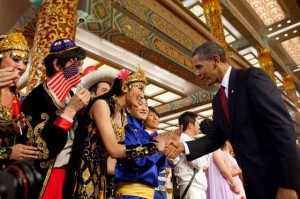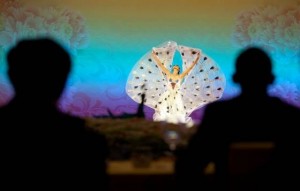The evening before the pageant at Obama’s State Dinner, a brand new work greeted the President in grass-roots circumstances. Here is a reprint of Tony Hutchinson and Dale Kreisher’s superb report:
The White House Blog
(The Book of) Change Has Come
Posted by Dale Kreisher and Tony Hutchinson on November 19, 2009 at 12:26 PM EST
One striking aspect of President Obama’s visit to China is the excitement it has generated at all social levels throughout the country. Rather than being seen as a dry, political event with little relationship to ordinary people’s lives – as such events often are perceived – President Obama’s trip here has energized Chinese and foreign residents alike.
Beijing is a city of intellectuals, artists, and scholars, with a lively and active arts scene. While the large establishment-supported (and state controlled) “arts industry” flourishes, so too do hundreds of small informal gatherings of artists creating things of beauty for art’s sake.
As the President arrived at Beijing’s airport, miles away, in Beijing’s old city center, in a tiny private theater in a small hutong (alleyway) not far from the Forbidden City, some of Beijing’s top artists celebrated his arrival in a unique way.
Musicians from the Central Conservatory, dancers from the Beijing Contemporary Dance Theater, and colleagues came together at the Penghao Theater next to the Central Drama School to stage an evening concert and dance performance in honor of the President’s arrival. The music was marked by fusion of Chinese and Western techniques and aesthetics. The keystone performance was a dance piece, with original music, composed and choreographed specifically for President Obama’s visit to China. Entitled “Changes,” this dance/music/visual spectacle draws inspiration from President Obama’s leitmotif of “A Change has Come” and the ancient Chinese divinatory text, the “I Ching,” or Book of Changes. The performance features Chinese dancers executing moves conceived by a Chinese choreographer; dancing to music written by an American composer; against a multimedia backdrop of ancient Chinese pictograms; in honor of a transformative American President.

